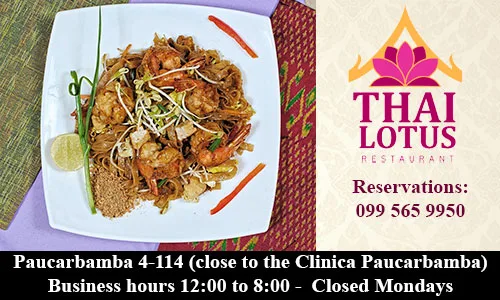Checking out shaman country in Zamora-Chinchipe in southeastern Ecuador
By Wendy Jane Carrel
I have returned from the province of Zamora-Chinchipe in the Amazon region where it is humid every day of the year. It is located in the southeastern part of Ecuador and straddles the Andes province of Loja and the Peruvian Amazon border. Zamora Province is shaman country, an agricultural center, and a mining center.

Main plaza in Zamora, listening to the Mayor speak.
The bus trip from Cuenca took seven+ hours curving up and down mountains. I got “bus sick”, nausea and headache on the way, but it was worth it. The best part was being so close to magnificent orchids growing wild on the cliffs along the road in.
The Spanish colonial city of Zamora has a population of 25,510. Its elevation is 3,142 feet above sea level. It is located at the convergence of three rivers — the Bombuscaro, the Jamboe, and Zamora. Even though it was founded by Spaniards, it was attacked by the Shuar and Saraguro Indians and has a distinctly indigenous quality plus an ethnic make-up that includes Afro-Ecuadorians and mestizos. Indigenous peoples are seen to an even greater extent in Yantzaza, the second largest city of the province, about one hour away. The closest airports are Malacata outside Loja and the new Mariscal Sucre Airport in Quito, about 274 miles away.

Padre Jorge of the Shuar Federation
The highlight of my visit was meeting with the head of the Shuar (Amazon Indian) Federation, a Shuar who is a Franciscan priest, Padre Jorge Chumapi, an amazing person, as well as meeting other Shuar. We drove to find a Shuar family 50 minutes into the jungle outside the city above Timbara, and went to look at a new cultural center, a replica of original Shuar round housing built with timber siding and a pointed round thatched roof covered in palm fronds. It turns out there are Shuar in Peru, plus Shuar in other provinces of the Amazon region. In 1995, during a war with Peru, many Shuar packed up their families and moved, some to the coast in Esmeraldas because they didn’t want to be fighting against their blood brothers. I found each Shuar I met to be remarkably well-grounded, hospitable, articulate, energetic, and smart.
Note about Padre Jorge: He was taken from his village to study with the Franciscans at age six. When he returned home at age 16, he could no longer remember his mother tongue. He stayed to re-learn Shuar and then returned to what he says he wanted most, a religious life, and to be of service to his people. Padre Jorge would also like to preserve the culture of his people and their wisdom. He would welcome any European or North American financial support.
The Shuar number about 8,446 and are located in 78 Shuar communities throughout Ecuador. According to Padre Jorge this is a reason their voices are rarely heard: they are so few in number. Other indigenous peoples in the country are the Achuar, Cofan, Kichua, Shiwiar, and the Sioyas.

Shuar Cultural Center above Zamora
The Shuar would also like to welcome Europeans and North Americans for medicinal herb classes at the cultural center in the mountains. If you are interested, for example, in shrunken heads, the elders who could talk about it are about an hour trek into the mountains outside Yantzaza which is an hour or more north of Zamora. (It requires one to two full days). I wish I had the lay of the land about this ahead of time as it was the elders who interested me most. But it takes a long time to distill information from Ecuadorian guide books and other sources, and sometimes one does not know if what one is told or one is reading is accurate unless you can find out in person.
I met a shy Shuar nurse, Cecilia, on duty at the emergency room of the public hospital in Zamora. She lives in the Shuar settlement at Martin Ujukam. I had hoped to meet four of the elders in her village but the roads in and out were flooded.

Government/Charity home in Zamora
I did manage to see two senior care homes, one in Zamora run by a Polish priest who likes cigars and coffee, and another one in Yantzaza, far more modest, where I was able to meet up with local elders. I was briefly introduced to the Mayor of Zamora — political smile, handshake, and all, and I visited the MIES office (government social services) for seniors.
The electricity was out almost the whole time — which meant no fans. It would not have been wise to consider eating food that needed refrigeration, so I lived on the dried fruit I brought with me, bottled water, tea and coffee (water boiled over gas burners), fresh fruit, and too many carbs — bread and chips; I had not eaten chips in years but they tasted great!!
Thankfully, the Wampushkar Hotel in Zamora could make me an omelette every morning on the gas stove and it was my main meal. And thankfully, the hotel was immaculate (hard to come by in some smaller towns); its open-air rooftop breakfast room with a view to the river below and to surrounding mountains covered in orchids and bougainvillea — a delightful place to start each day. Total cost of the trip including bus fare from Cuenca, $130.
Note: Food specialties of the province are ancas de rana (deep fried bull frog legs) and fish pond tilapia. No salt is used in most recipes yet the sweetheart at Wampuskar used salt (full of flouride, ouch!) on the omelette the first morning; remember to say no salt when you order almost anywhere in Ecuador.
There is little to do in the town, but there is major birding in the Podocarpus National Park with its tropical cloud forest, hiking trails, and camping possibilities. The park is considered to have one of the highest bio-diversity areas on earth. It is amazingly beautiful. $5 to enter.
Also visit: Parque Lineal next to the Zamora River, the main marketplace where you can sample horchata con salvila, an herbal tea made of five medicinal plants mixed with aloe. Another local beverage is the alcoholic chichi, made with manioc, yucca, or the chonta nut. Natives of the region drink large quantities of chicha. The drink is apparently tasteless as no sugar is used for fermentation. Visit Orquideario Paphinia, 2 km. away, it’s a greenhouse with 3,000 native plants including orchids, medicinal plants, edible native plants, and ornamental plants and shrubs. I tried three times to visit Orquideario Tzanka, one block from the central plaza to see orchids, medicinal plants, edible native plants, and ornamental plants and shrubs. It was never open. Two kilometers away is Orquideario Paphinia, a greenhouse, couldn’t get there with all my other obligations.

Along the Zamora River, in Zamora.
Hotels in Zamora city:
You can walk to all hotels, with the exception of the Copalinga Cabanas located a 10-minute taxi ride away at the edge of Podacarpus Park.
Hotel Betania, (593) 260-7030, Francisco de Orellana e/Amazonas y Diego de Vaca S/N, Zamora www.hotelbetaniazamora.com, e-mail hotel-betania@hotmail.com. Dra. Soledad Regalado I., owner ,$13 singles + $3 breakfast. Stayed one night, low energy service, no smiles, and morning sewer stench in plumbing.
*Copalinga Cabanas for naturalists, birders, just steps from the Podacarpus Park, (099)347-7013, www.copalinga.com. This could be an amazing experience for couples and families. Friends who’ve stayed there loved it. Photos on web site tell all. $50 or more per person + meal costs
Gomar Hotel, run by a 30-something Ecuadorian and his mother who spent 20 years in New York, very friendly, cannot comment as I did not see the inside. Tel. (07)2608235 (099)854-3894, gomarhotel@hotmail.com
*Hotel Samuria, 24th of May Street, between Diego de Vaca and Amazonas streets, hotelsamuria@hotmail.com, tel. 2607822 or 2607801, owners Carlos Aguilar and his wife Maria Elena Mouma lived in London for eight years. Immaculate, modern, quiet, sophisticated. Think Hilton Hotels. A mini-version of the Howard Johnson’s in Loja. No elevators. It would be cool inside this hotel as opposed to balmy. Very nice, affordable. I liked the welcoming owners. Across the street from the city hall and a panaderia (bakery), and just off the central park.
**Wampushcar Hotel, Ing. Silvia Valencia M, Gerente Proprietaria, tel. (07)2607800 or (099)100-0776, Room 107. Blanca, Miria, Rosemary, Jenifer, Carmita and daughter are sweet employees. I liked this small, modern, lime and white eco-friendly hotel very much. No elevators. Enjoyed eating breakfast on the open-air top floor with view to the mountains, river, city… just loved it…. But because it is warm and tropical in Zamora I would not recommend staying in the west side rooms which receive super strong sun. If it is really hot and humid and the electricity is out, the rooms could be very uncomfortable. My room faced the street and was warm and breezy at night, neither hot nor cold. My room with breakfast was under $20. No web site but there is a Facebook page: https://www.facebook.com/hotel.wampushkar
Restaurants:
Good luck. Other than arranging to eat organic meals as a guest at Copalinga, I found one clean, organized place with fresh food and friendly service two doors up from the Wampushkar, going toward the central park on Diego de Vaca, same side of street. It is called Castelez Pizzeria, Cafeteria y Heladeria. Charming inside. Tel. 260-7991, Marlon Erazo Castillo is the owner.
Taxi: I used Cristian at tel. 098 004-0385 and found him to be quite reliable, no English
Grocery store: Supermercado di Cari for chips, water, hair accessories… near the bus station…
Suggested reading before you go: The Gringo, by J Grigsby Crawford, a super courageous Peace Corps volunteer who lived in Zumbi, Zamora, half-way between Zamora city and Yantzaza. http://www.amazon.com/The-Gringo-J-Grigsby-Crawford/dp/0988482274
________________
Wendy Jane Carrel, M.A., has been researching and writing about health care options for older adults in Chile, Ecuador, and Mexico for the last three years. She has lived or worked on four continents in over 40 countries.


















